I stand quietly behind a carver, hypnotized by the gentle glide of the draw knife as she pulls it down the length of the rough wood. The single shaving curls under the two-handled blade like a sliver of Gruyere, smooth and unblemished, before fluttering silently to the floor. Each discarded shaving at her feet seems like a work of art itself – one wrapped tight like a Chinese yo-yo, another loose like a delicate tendril of hair, yet another spiraled into a perfect corkscrew.
Above my head, wooden skiffs, hulls sanded smooth, fit snug between the beams. Behind me, a woman clamps pieces of birch bark into the shape of a basket and threads a strand of stiff fiber taut in a crisscross pattern to hold the rim in place. Through the double doors, Shasta daisies and fireweed bloom bright, and a sailboat mast tips as a breeze ripples the lake. The air inside the workshop is sweet with the scent of raw wood.
The colorful buildings that comprise the North House Folk School sit on the shore of Lake Superior in the small town of Grand Marais, Minnesota, 40 miles south of the Canadian border. The school was founded in 1997 when social worker Mark Hansen gathered 14 people to build a Greenland kayak over a weekend. It was a diverse group of at-risk youth and older men and women, but by the time the kayak was finished, a community had been born. “The common thread was their interest in craft, ” says Andrew Beavers, intern coordinator at the North House Folk School. “A sense of community was created through the process of making something together with their hands.”
That sense of community is palpable as I walk from building to workshop to classroom. It’s evident in the easy laughter among the students; in the way they lean in to admire each other’s craftsmanship; in how they work side-by-side in quiet companionship, the only sound the rhythmic knocking of the draw knife against the wood or the whisper of birch bark as it’s woven strip by strip.
The non-profit North House Folk School offers hundreds of hands-on classes in traditional northern crafts and attracts students and instructors from around the country and the globe. In the courtyard I chat with Katy, who is originally from the Twin Cities (the Minneapolis/St. Paul area) and now lives in Virginia. She’s taken several North House classes over the past ten years – soap making, nålbinding (a Scandinavian form of knitting), bread baking, jelly making – and has brought three friends from Virginia to experience the school. I also meet Mary, a retired teacher who lives in Grand Marais, and who has invited her friends from Arizona to try the bread baking class.
Across the courtyard inside a long, low-slung building, craftsman Vladimir Yarish teaches a dozen students the art of Russian birch bark weaving. A row of men and women, ranging from college students to retirees, hunch over the tables in concentration, scissors, twine, clips and strips of birch bark strewn in front of them. The room is quiet, save Yarish’s low murmur as he bends next to one of his students, offering instructions in a thick Russian accent, his fingers deftly plaiting the smooth bark. Thirty-two years ago Yarish decided to learn the ancient craft, which has been popular in Russia since the Middle Ages, after he received a woven birch bark piece as a birthday gift. Now he travels the world teaching the craft to others. This is his third visit to the North House Folk School and his tenth trip to the United States.
Other courses offered at the school include blacksmithing, shoemaking, Ojibwa bead embroidery, Norwegian needlecraft, foraging for wild spring edibles, bird and wildlife photography, snowshoe construction and ukulele making. You can even take to the waters of Lake Superior to learn the craft of sail aboard the Hjørdis, a traditional gaff-rigged 50-foot schooner. Or, if you’re more of a landlubber, you can learn how to build your own yurt, dovetail log cabin or traditional timber frame cabin.
I wander the campus as the school day winds down. In the kitchen the bakers are cleaning up, wiping stainless steel counters, drying mixing bowls, stacking cutting boards. The cool breeze carries the sound of their chatter and laughter through the open double doors to where the carvers still perch on their wooden stools, piles of wood shavings crushed beneath their feet.
An older man, blue-striped apron draped from his neck, strolls across the courtyard toward the picnic table where his wife and friends sit, and I catch the savory scent of baked focaccia wafting from the tinfoil-wrapped packages he carries in two hands.
Across the harbor the Hjørdis rounds the breakwater, its maroon sails stark against the cerulean sky as it tacks toward the dock and the end of another day at the North House Folk School.
Post and photos by Michelle DeRusha.
Browse Literary Tours
__________________
__
Get a hand-selected poem paired with beautiful art delivered to your inbox every weekday morning.
BUY A YEAR OF EVERY DAY POEMS, JUST $5.99
_
- Regional Tour: Homestead National Monument, Beatrice, Nebraska - November 13, 2015
- Making Little Free Library No. 25, 001 - November 4, 2015
- Regional Tour: North House Folk School, Grand Marais, Minnesota - August 12, 2015
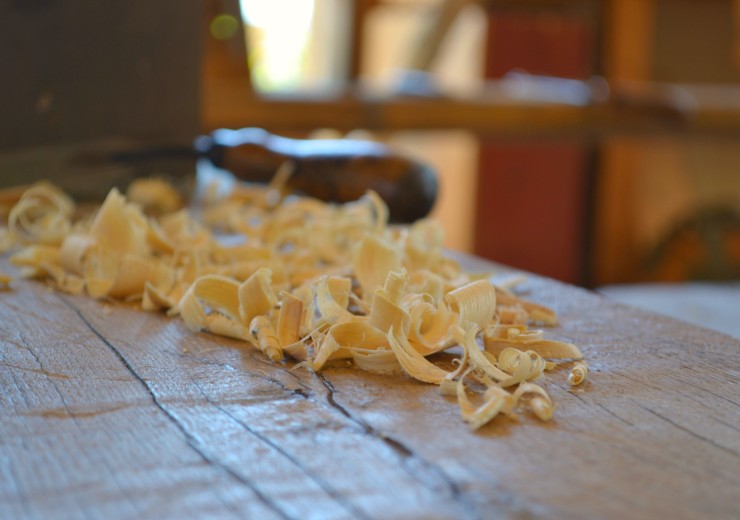
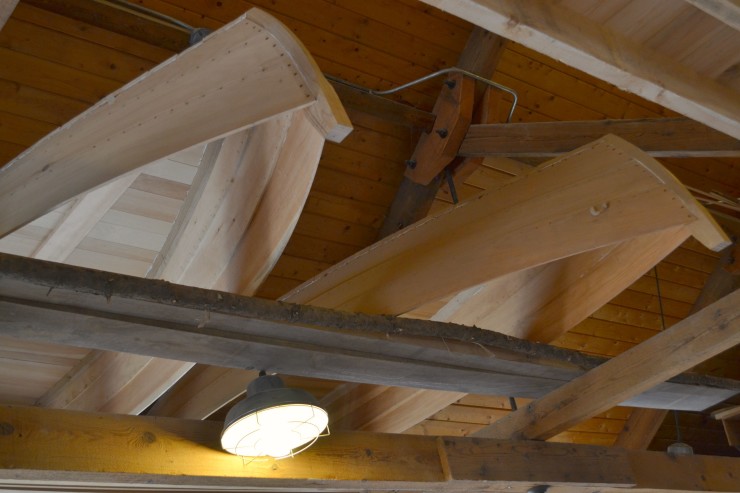
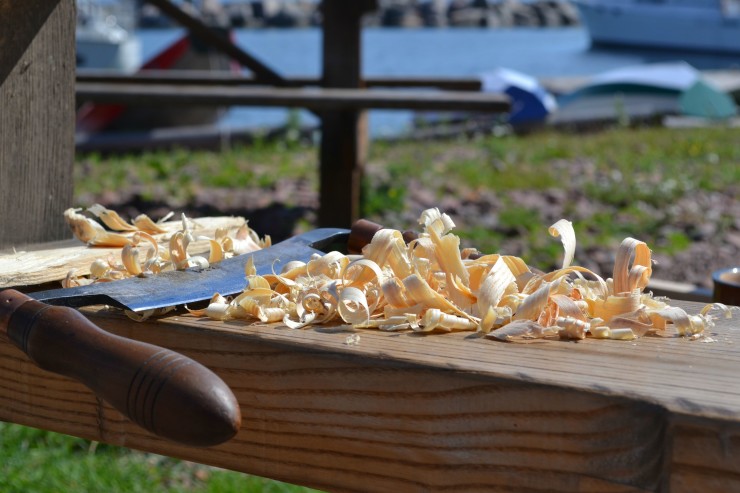
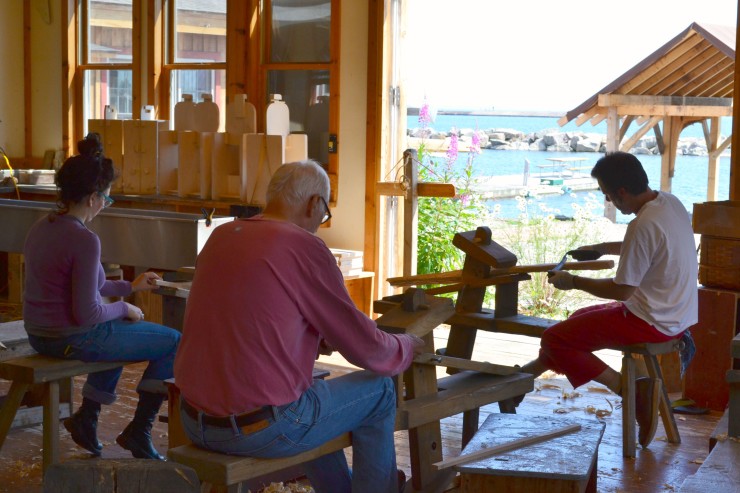
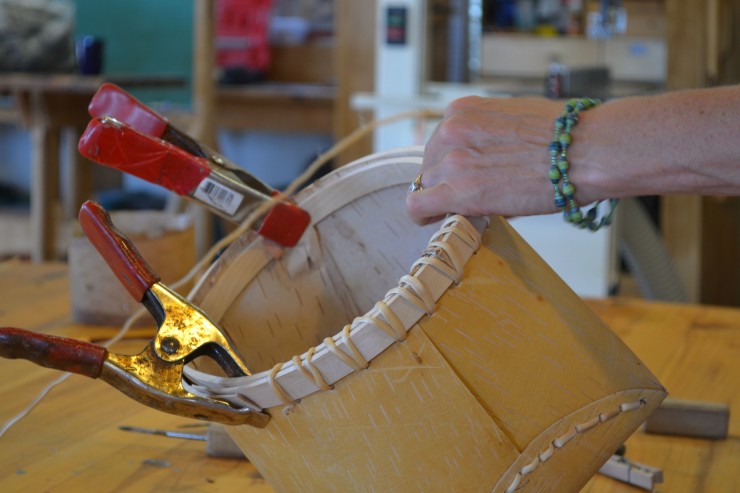
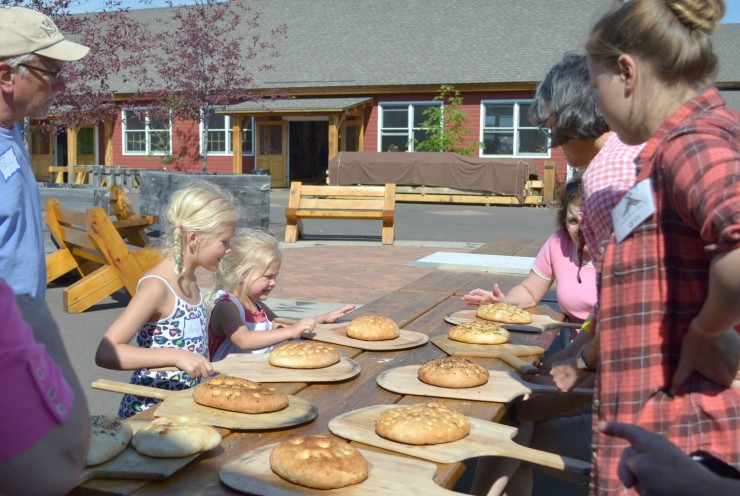
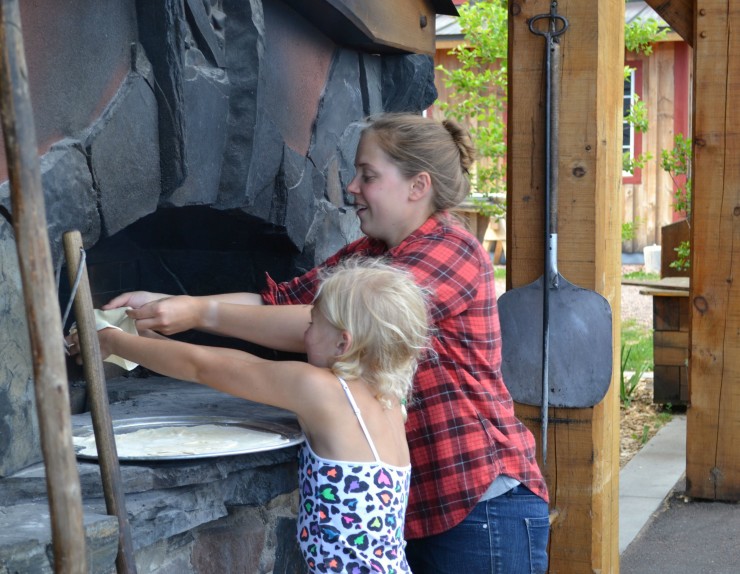
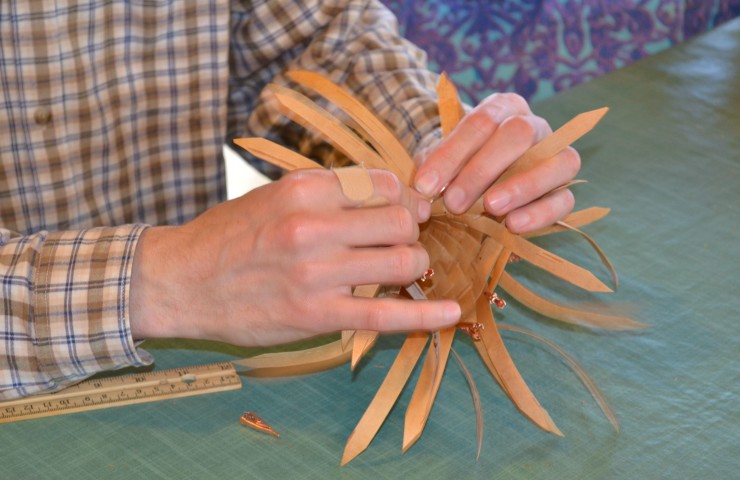
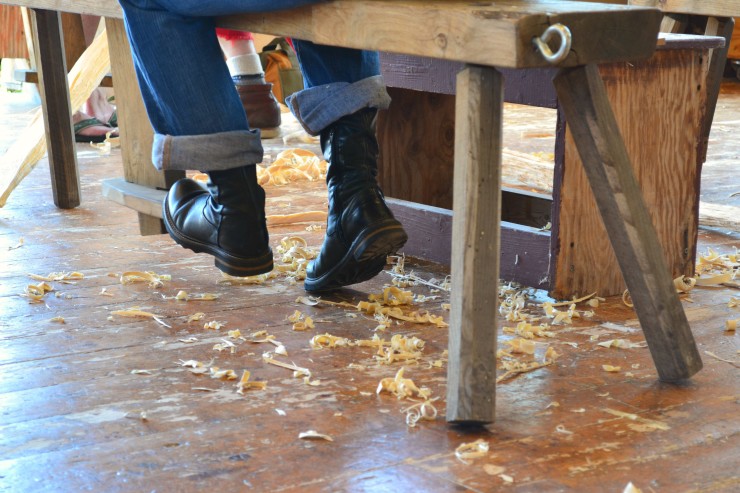
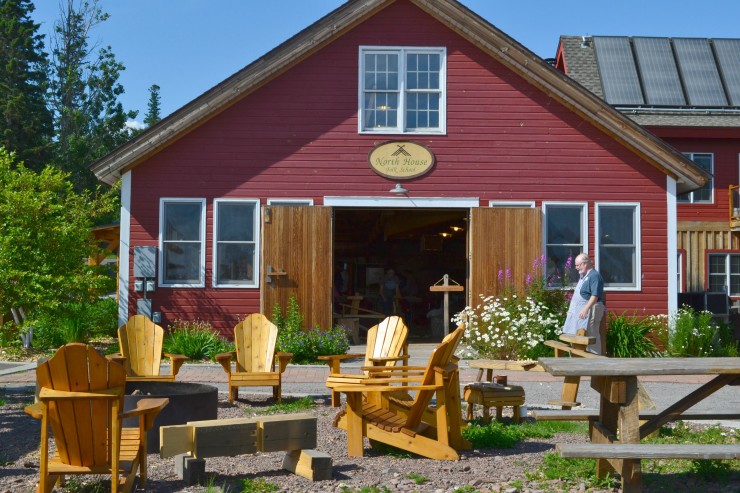
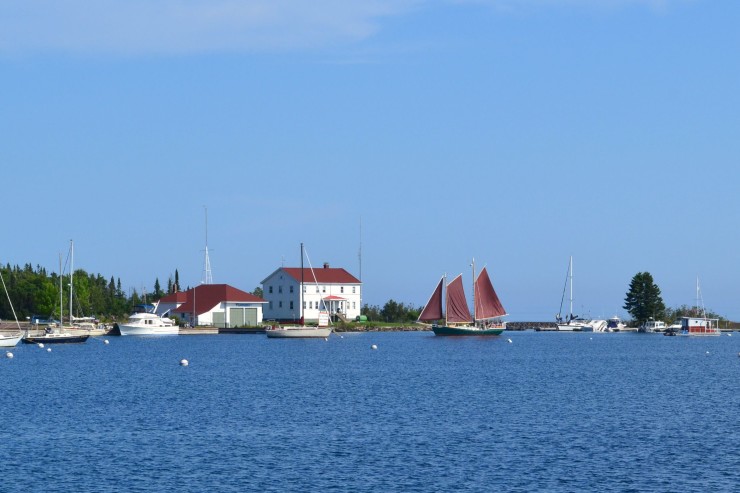

Maureen says
The school seems an especially fun place for kids. Nice post, Michelle!
Michelle DeRusha says
Absolutely, Maureen. Every year we are up there, we say we are all going to enroll in a class. Unfortunately we haven’t yet…but it’s on the “bucket list”!
SimplyDarlene says
Fresh-cut wood and focaccia bread in the same locale? Oh, what sensory delights!
What intrigued you the most? If you could, which course would you take? (I’d sail. I’ve never done that.)
Michelle DeRusha says
There are SO many classes to choose from, Darlene. My son Noah would take the mushroom foraging class. My husband would take the cabin-building class. And I think I would take photography…or maybe basket weaving…or perhaps baking. 🙂
Lynn D. Morrissey says
I wish I had known this was here, Michelle, when I was in Minnesota, twice now. It sounds wonderful–a real sensory delight. We have similarly enjoyed sauntering through Williamsburg, Virginia, appreciating the revival of old crafts, so artistically rendered. Your beautiful word-painting makes this even more delightful. And I often forget to tell you that you are a gifted photographer as well as wordsmith! Likely, this post evoked in me, besides curious interest, something different from your other readers. I have a real appreciation of Russian art and crafts. and the people themselves. My mother visited Russia in the seventies during the Cold War, through a university tour, led by a St. Louis priest. It’s a really long story, which I’ll not detail here, but she ended up corresponding with a woman music teacher and pianist (more my age), and they have corresponded since that time–nearly forty years, countless *handwritten* letters later! I, too, occasionally write to her, though Mother must translate our letters. Natasha, though really strapped financially, sometimes sends small craft items to us, such as stunning lacquered boxes and brooches, and occasionally small delicately carved wooden items. Their intricacy and beauty is amazing. I think of all this now, of course, because of the Russian artisan you describe so winsomely here. It also reminds me that despite real differences between our governments, real differences our countries hold on human rights, the people themselves are often not the cause of such sharp division. And it reminds me, too, that the arts are universal and serve to unite in beauty, rather than divide in discord. Thank you so much for sharing. I love these particular posts of yours. You’re so versatile. And I hope you and your family will be able to take a class! Maybe we will too!
Love
Lynn
Michelle DeRusha says
I love your insights on the power of art (and artists) to bridge gaps, Lynn. Vladimir was so interesting, and his work was stunnning. I could have listened to him and watched the budding artisans in his class (as well as the woodworkers) all day.
Gar-Bear says
Great photojournalism, Michelle. I’m going to convert you yet. Send this to Yankee magazine or Readers Digest.
Michelle DeRusha says
Gary! Yankee Mag isn’t going to be keen on article about MINNESOTA! 🙂
I’m so glad to see you here…made me smile.
Charity Singleton Craig says
Love this, Michelle. We are such consumers these days that it feels so enchanting to see the art and craft of making things–being producers–taught and passed on. And I agree with Gary–your photography is amazing as well.
Dolly@Soulstops says
Michelle,
Your words and photos transport me….Thank you 🙂